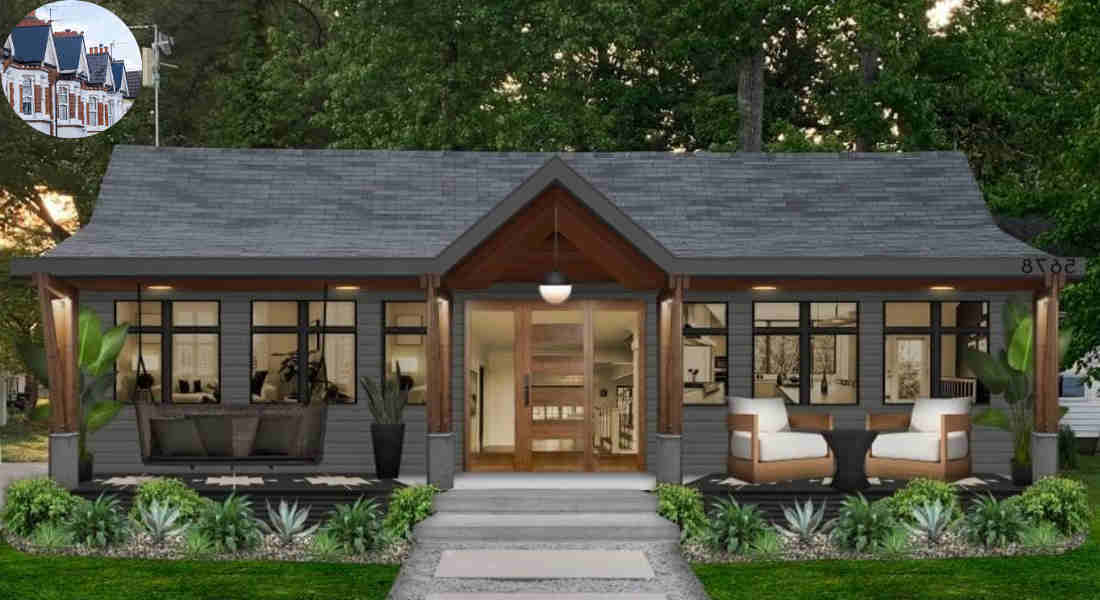A typical house in the UK varies in weight depending on its size, construction materials, and design. Generally, houses weigh between 50,000 to 100,000 pounds (approximately 22,700 to 45,400 kilograms) for a 1,000 square foot home, with wooden-framed houses being lighter and brick or concrete houses heavier due to denser materials. The average UK house size ranges from around 656 sq. ft. for apartments to about 1,582 sq. ft. for detached homes, which influences the overall weight. Construction industry rules of thumb estimate about 200 pounds per square foot for single-level homes, increasing with additional stories. Therefore, a typical UK house, depending on type and size, might weigh anywhere from tens of thousands to over a hundred thousand pounds when including foundations and structural components.
Factors That Affect the Weight of a House
Several factors influence the weight of a house. The materials used in construction play a crucial role. For instance, traditional brick and stone houses tend to weigh more than those built with lightweight materials like timber or metal.
Design also matters. A multi-story home generally weighs more due to the added floors and structural supports compared to a single-storey bungalow.
The geographical location can’t be overlooked either. Houses in areas prone to harsh weather may require additional reinforcements, increasing their overall weight.
Interior features contribute significantly as well. Heavy fixtures, such as stone countertops and cast-iron baths, add pounds that can affect not just the structure but also its foundation needs.
Modern technologies like insulation types can alter weight too—some high-performance insulations are lighter than traditional options while still offering excellent thermal efficiency.
Average Weight of Different Types of Houses in the UK
The weight of houses in the UK can vary significantly depending on their design and materials. A traditional brick home typically weighs between 80 to 120 tons. Its heavy construction makes it a popular choice due to its durability.
Timber-framed houses are generally lighter, averaging around 40 to 60 tons. These homes offer flexibility and energy efficiency, becoming increasingly popular for modern builds.
Bungalows tend to weigh less than multi-storey houses due to their single-level design. They usually fall within the range of 50 to 70 tons.
If we look at contemporary structures made with eco-friendly materials, such as straw bale or recycled components, these can weigh less than conventional designs while maintaining strength and insulation properties.
Every type has its unique advantages that affect not just weight but also sustainability and overall living experience in the UK’s diverse landscape.
You may also read (when should you consider house rewiring).
What Contributes to the Weight of a House?
The weight of a house is influenced by various components. Building materials play a critical role. Brick, stone, and concrete are heavier than wood or metal.
Structural elements contribute significantly as well. Beams, columns, and roof trusses add to the overall heft. Larger homes naturally weigh more due to their size.
Insulation also matters. Different types have varying densities that can affect weight considerably.
Fixtures and finishes shouldn’t be overlooked either. Heavy appliances or elaborate furnishings increase the total mass.
Landscaping features such as patios or decks further impact weight distribution around the foundation.
Even soil composition affects how weight is supported beneath your home. A solid base ensures stability while accommodating additional loads over time.
All these factors together create a complex picture of what makes up a house’s final weight in the UK market today.
Impact on the Environment and Infrastructure
The weight of a house significantly impacts the environment and surrounding infrastructure. Heavier homes put more pressure on foundations, leading to potential structural issues over time. Repairs and maintenance can be costly due to this strain.
This demand contributes to resource depletion and carbon emissions during production and transportation.
Urban areas may struggle with infrastructure when many large homes are built closely together. Roads, drainage systems, and utilities must accommodate this added weight, which can lead to wear or even failure if not properly managed.
Changes in land use can disrupt habitats for wildlife, making it crucial for builders to consider environmental impact before commencing projects. Balancing home weight with sustainability is essential for future developments.
You may also read (how to identify if your house needs rewiring).
How to Reduce the Weight of Your House
Reducing the weight of your house can have several benefits. It not only makes construction and renovation easier but also lessens the strain on foundations and surrounding infrastructure. Here are a few strategies to consider if you’re looking to lighten your home.
First, think about using lightweight materials in place of traditional ones. For example, opting for timber frames rather than brick or concrete can significantly reduce overall weight. The use of engineered wood products, such as laminated veneer lumber (LVL), also offers strength without added mass.
These elements are often designed with efficiency in mind, allowing builders to use lighter materials while maintaining structural integrity.
Modern insulation made from recycled materials tends to be lighter yet effective. When it comes to roofs, consider alternatives like metal sheets instead of heavy tiles; they offer durability while minimizing load.
If you’re planning renovations or extensions, focus on open-plan designs that utilize fewer walls and support beams. This not only reduces weight but enhances space utilization too.
Consult professionals who specialize in sustainable architecture and design techniques tailored for reducing a building’s footprint—both literally and figuratively.
By implementing these strategies thoughtfully during both new builds and renovations, homeowners can effectively manage their house’s weight while contributing positively toward sustainability efforts.
You ay also read (does removing a chimney breast really devalue your home).

